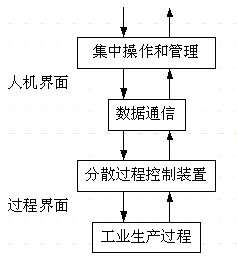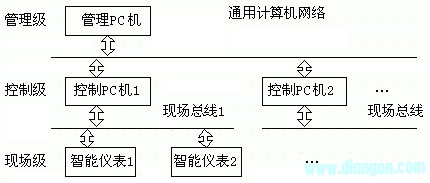Modern industrial production has evolved to demand more complex control systems that can manage multiple inputs and outputs. As a result, distributed control systems (DCS) have become essential for handling the increasing complexity of industrial processes. These systems allow for decentralized control while maintaining centralized management, making them ideal for large-scale applications. However, due to the high cost of foreign fieldbus equipment and DCS solutions, many state-owned enterprises are exploring custom-designed systems that align with their specific needs.
This paper presents a study on the development of a multi-intelligent instrument control system using smart meters as the core field devices. The system aims to provide an affordable and efficient solution for industrial automation, particularly for small and medium-sized enterprises (SMEs). A practical experimental system was built, consisting of a PC, smart meters, a serial communication card, RS-485 bus, and a controlled object model. This setup allows for real-time monitoring and control, enabling comprehensive testing of various control algorithms and protocols.
1. Architecture of Multi-Intelligent Instrument Control System
1.1 General DCS Architecture
Distributed control systems have evolved significantly since the mid-1970s, integrating computer, communication, control, and display technologies. The architecture typically consists of three main components: the distributed process control device, the centralized operation and management system, and the communication network. These components work together to ensure seamless data exchange and system coordination.
1.2 Multi-Intelligent Instrument Control System Architecture
The proposed system is designed to meet the needs of domestic SMEs by leveraging smart meters and a simplified communication protocol. The overall structure includes field-level devices such as smart meters, a control PC, and a management PC. Communication between these components is facilitated through an RS-485 bus, which offers reliable and cost-effective connectivity.

Figure 1: DCS Structure Block Diagram
The system architecture is divided into several functional layers, including the field control station, process control station, control level, and production management station. Each layer plays a specific role in ensuring smooth operation and effective control across the entire system.
2. Communication Protocol of Multi-Intelligent Instrument Control System
Communication is a critical aspect of any intelligent control system. In this design, a custom communication protocol was developed based on the OSI model, focusing on the application, network, data link, and physical layers. The protocol uses time slices to allocate communication slots for each smart meter, ensuring orderly data exchange. At the physical layer, the RS-485 twisted pair is used for signal transmission, while the data link layer handles frame assembly, error checking, and data buffering.

Figure 2: Network Structure Diagram of Multi-Intelligent Instrument Control System
3. Control Programming and Communication Software Design
To implement the communication function, Visual C++6.0 was used to develop a communication thread that handles data transmission and processing. The software also includes monitoring, printing, and storage functions, allowing users to customize control algorithms and monitor system performance in real time.
4. Examples
A practical example of the system involves the USTS-100 smart meter, which was developed based on the SEU-211 intelligent temperature controller. This meter supports standard voltage and current signals, integrates input/output circuits, and enhances adaptability for different industrial applications. The communication protocol is implemented using RS-485, and the software design incorporates multitasking features to ensure precise control and efficient data handling.
5. Conclusion
This research demonstrates the feasibility of using smart meters and RS-485 communication to build a cost-effective and efficient multi-intelligent instrument control system. The experimental results confirm that the system can perform complex control tasks and support various industrial applications. By addressing the needs of SMEs, this system has significant theoretical and practical value for improving automation technology in China’s industrial sector.
High Brightness Open Frame Monitor
High Brightness Open Frame Monitor,Open Frame Monitor,High Brightness Embedded Lcd Monitor,Embedded Open Frame Lcd Monitor
Shenzhen Risingstar Outdoor High Light LCD Co., Ltd , https://www.risingstarlcd.com